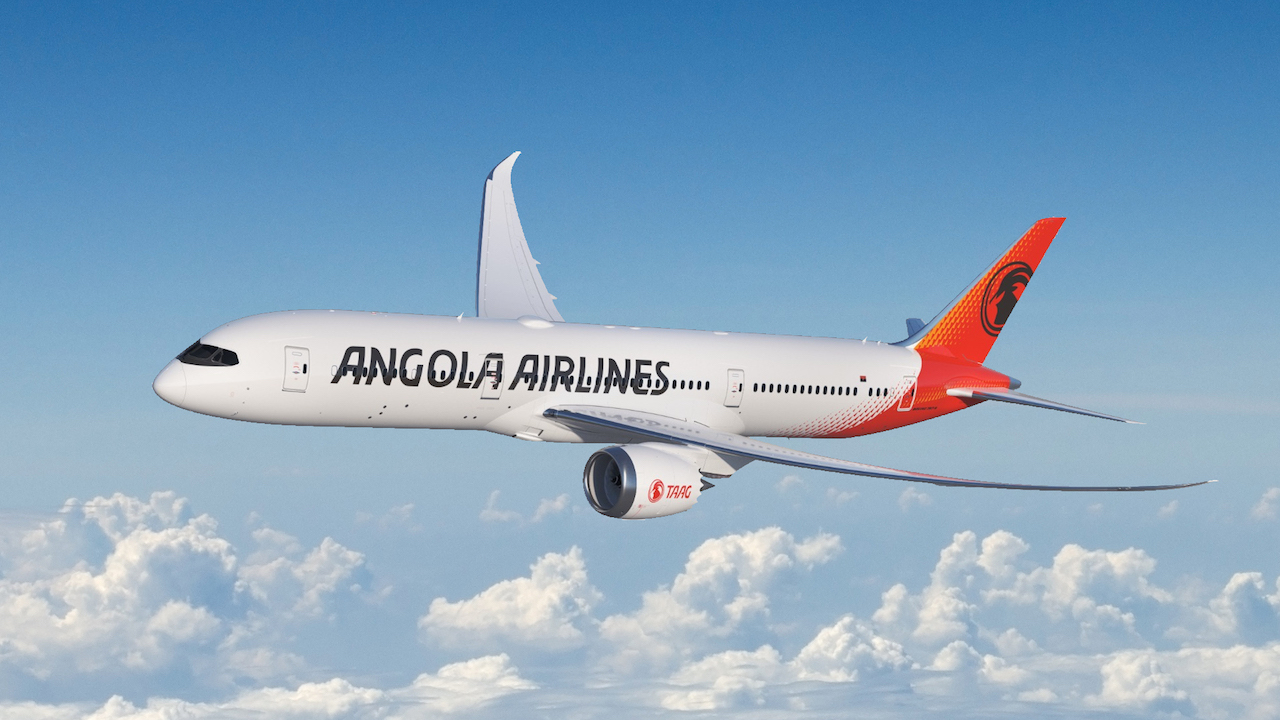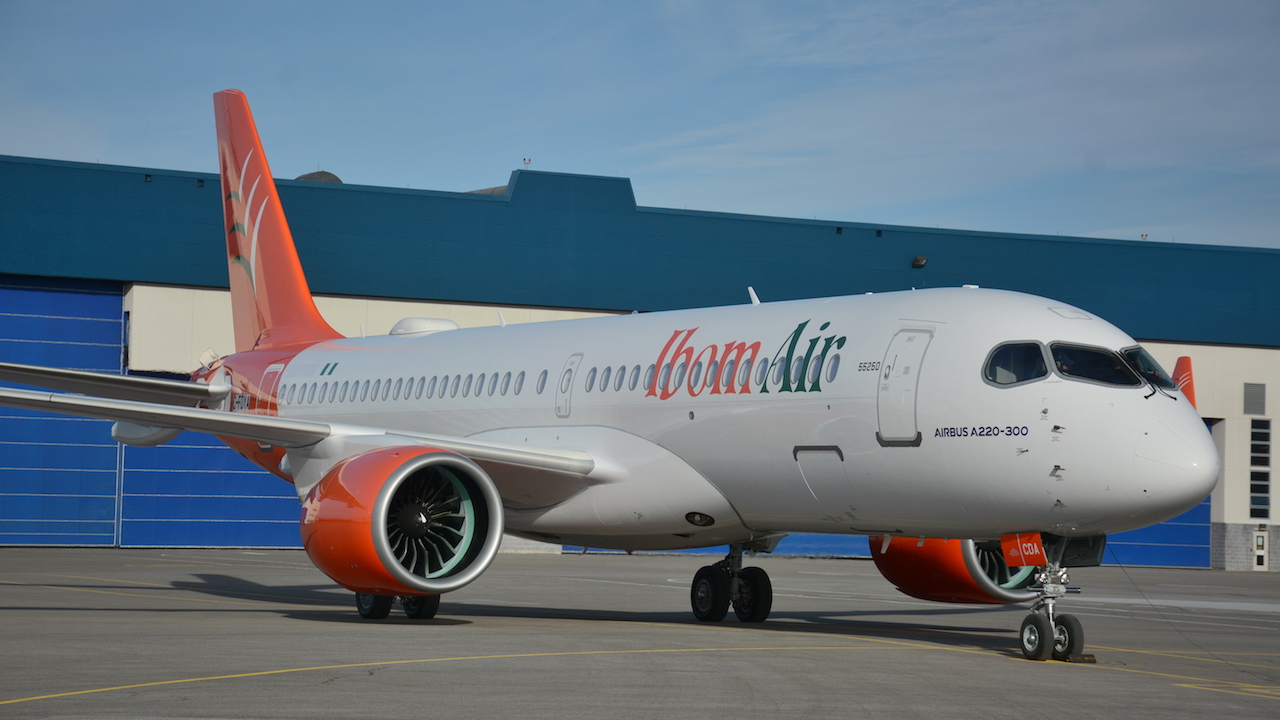TAAG's home improvements
As Africa’s aviation industry continues to evolve, TAAG Angola Airlines is positioning itself as a central player in the continent’s aviation resurgence. Yonathan Menkir Kassa investigates.

Big step: TAAG's first Boeing 787-9 Dreamliner delivered in February. IMAGE: TAAG
Under the visionary leadership of its CEO, Nelson Rodrigues de Oliveira, the airline is redefining its role by investing in fleet modernisation, infrastructure, and human capital while embracing its unique geographic advantage. The CEO sheds light on TAAG’s ambitious plans and the steps being taken to secure its place on the global aviation stage.
Discussing the ongoing privatization process, the CEO explained how the airline is adapting its ownership model. “We’re transitioning to a shareholding structure where ownership will be divided among government-owned entities, including the ministry of finance and ENANA, which oversees airspace control,” he shared. “This approach aims to enhance efficiency and performance while ensuring government oversight.”
This transition aligns with Angola’s broader economic diversification goals. By modernising its corporate framework, TAAG is primed to meet the challenges of an increasingly competitive global market. “It’s about being leaner, more agile, and prepared to seize opportunities as they arise,” he added.
Moving to the strategic advantages of Angola’s geographic location, the CEO emphasised the country’s potential as a hub. “Angola’s location makes it a natural connector between Africa, Europe, and the Americas,” he said. With established routes to destinations like São Paulo, Havana, and Lisbon, and plans to expand to cities like Toronto, TAAG is capitalising on its position.
“We’re not only focusing on transatlantic connectivity, but also strengthening regional links within Africa. For instance, we’re just three hours away from cities like Johannesburg and Maputo, which gives us a strategic edge.”
The centrepiece of this connectivity strategy is the new Agostinho Neto International Airport. “This is one of Africa’s most modern airports,” he noted proudly. “It’s designed to handle increasing demand and elevate Angola’s regional and global connectivity. More than just infrastructure, it’s a gateway to economic growth and opportunity.”
Turning to the importance of regional collaboration, the CEO discussed TAAG’s commitment to the Single African Air Transport Market (SAATM). “We’re fully aligned with SAATM’s goals,” he stated. “This includes simplifying visa procedures for travellers from neighbouring countries such as Mozambique, South Africa, and Namibia. By removing barriers like restrictive air rights, we’re fostering greater connectivity across Africa.”
Collaboration, he stressed, is key to unlocking Africa’s aviation potential. “Currently, the continent represents just two per cent of global aviation. By working together, African airlines can grow that share and make air travel more accessible and efficient,” he said.
The conversation naturally shifted to the airline’s focus on investing in people. Rodrigues de Oliveira spoke passionately about TAAG’s plans to nurture home-grown talent. “Next year, we’ll send 20 to 40 young Angolans to international training academies,” he revealed. “When they return, they’ll be equipped to contribute as skilled pilots and technicians.”
Simultaneously, TAAG is laying the groundwork for its own training academy. “Having an in-house training organisation is critical,” he emphasised. “It ensures that our workforce not only meets technical standards, but also embodies TAAG’s corporate values. This consistency is vital for operational excellence and delivering a superior customer experience.”
TAAG Angola Airlines has taken a major step in its fleet modernisation journey with the delivery of its first Boeing 787-9 Dreamliner in February, featuring the airline’s refreshed livery.
“The delivery of the 787-9 is a pivotal step in our strategy to modernise TAAG Angola Airlines’ fleet,” said Rodrigues de Oliveira.
“This aircraft brings the efficiency and versatility we need to meet growing market demands, replace our ageing widebody fleet, and deliver a world-class experience to our passengers.”
The airline is also integrating Airbus A220s into its fleet to complement its Boeing 777s. “Diversifying the fleet allows us to modernise while maintaining flexibility,” the CEO explained. “For now, the Boeing 777s will act as backups until the A220s are fully operational.”
TAAG Angola Airlines has taken a major step in its fleet modernisation journey with the delivery of its first Boeing 787-9 Dreamliner, featuring the airline’s refreshed livery. The advanced widebody jet, leased from AerCap, enhances TAAG’s long-haul capabilities while improving fuel efficiency and passenger comfort.
The Dreamliner’s arrival in Luanda coincides with Angola’s Liberation Day celebrations on February 4, nearly 50 years after TAAG received its first Boeing 737-200. “The delivery of the 787-9 is a pivotal step in our strategy to modernise TAAG Angola Airlines’ fleet,” said Rodrigues de Oliveira. “This airplane brings the efficiency and versatility we need to meet growing market demands, replace our ageing widebody fleet, and deliver a world-class experience to our passengers.”
This transition, while necessary, comes with challenges. “Training and maintenance adjustments are inevitable, and they incur short-term costs,” he admitted. “But these are investments in our long-term sustainability. By 2027, we aim to have a fully modernised fleet that serves both regional and international markets effectively.”
Shifting gears to tourism, the CEO highlighted TAAG’s role in promoting Angola’s attractions. “Our country offers unparalleled beauty, from pristine beaches to historic sites like Mbanza Congo, the capital of the ancient Kingdom of Kongo,” he said. Collaborating with the government and local businesses, TAAG is working to position Angola as a must-visit destination. “We’re also forming partnerships with hotels to offer discounts for our passengers, encouraging them to explore Angola’s unique offerings,” he added.
Beyond tourism, the airline is expanding its cargo operations to support Angola’s trade ambitions. “We’re developing logistics facilities at the new airport with a capacity of 150 tons,” he shared. “This infrastructure will enable exports of goods like coffee and bananas while facilitating the import of essential technologies and equipment.”
TAAG’s cargo services also extend beyond Africa, with strong links to Brazil and South Africa. “Brazil is a key trading partner, and we’re exploring ways to deepen this relationship,” he explained. “Our vision is to make Angola a logistics hub that connects regional and global markets.”
Despite its achievements, TAAG faces challenges, particularly economic volatility and high fuel costs. “Most of our expenses are in U.S. dollars, while local currencies fluctuate,” the CEO acknowledged. “This creates financial pressure, especially during economic downturns.”
Yet, the airline remains resilient. “Our five-year strategic plan focuses on operational efficiency, financial sustainability, and enhancing customer service. We’re optimising our operations to adapt to these challenges and drive growth,” he said.
Closing the interview, the Rodrigues de Oliveira reflected on TAAG’s broader mission. “We want to be more than just an airline; we aim to be a source of national pride,” he stated. “Our commitment extends beyond profitability. It’s about supporting Angola’s development, fostering community growth, and creating opportunities for future generations.”
This commitment is evident in TAAG’s corporate social responsibility initiatives. The airline supports schools and community programs across Angola, providing resources like computers and educational materials. “We also assist families with autistic children by offering free tickets for medical travel,” he shared. “These efforts reflect our belief that an airline should serve the people, not just the bottom line.”
Looking ahead, TAAG is set to expand its global footprint. “We’re preparing to launch new routes to North America and strengthen our European connections,” the CEO revealed.
With new Boeing 787s arriving soon, the airline is poised to meet growing demand. “Our ultimate goal is to connect Angola to the world and ensure that we play a central role in shaping the future of global aviation,” he concluded.
Stay up to date
Subscribe to the free Times Aerospace newsletter and receive the latest content every week. We'll never share your email address.

